For the last half century, Marrakech has been synonymous with the sort of glamorous boho chic style epitomized by jetsetters Talitha and Paul Getty Jr., whose 1969 photograph atop their 17th century Moorish palace by Patrick Lichfield continues to exist as an eternal style inspiration for fashion designers and decorators.
The exotic allure of Morocco‘s most cosmopolitan city continues to draw the cognoscenti, from its dramatic landscape of red desert that starkly contrasts with the snow capped Atlas Mountains, to the rise of palatial five star hotels, to the intriguing confluence of French and Arabic culture. Marrakech is indeed still a fashionable destination, but with a rich cultural history, where the old city blends effortlessly with the new, and historic architecture, landscaped gardens, handicraft shops, and authentic cafes make for endless fascinations.
Our most recent trip was specifically to check out the new exceedingly glamorous new Oberoi, Marrakech, set on 28 glorious acres just outside the city, and offering every luxury imaginable.
Here’s what we did.
Jardin Majorelle
In the ’70s, Yves Saint Laurent and Pierre Berge would spend extended periods of time in Marrakech to find inspiration for his collections. They were seduced by the idyllic Jardin Majorelle, an oasis of colors influenced by Henri Matisse and nature, and conceived by French painter Jacques Majorelle. In 1980, when it was going to fall victim to a real estate development project, Yves and Pierre purchased the garden and villa and lovingly restored it to its current glory. One of the most visited attractions in Marrakech, we were similarly seduced by the beautifully landscaped botanical garden, filled with exotic cacti amongst meandering paths and ponds that surround the enchanting indigo blue villa as the strikingly elegant centerpiece.
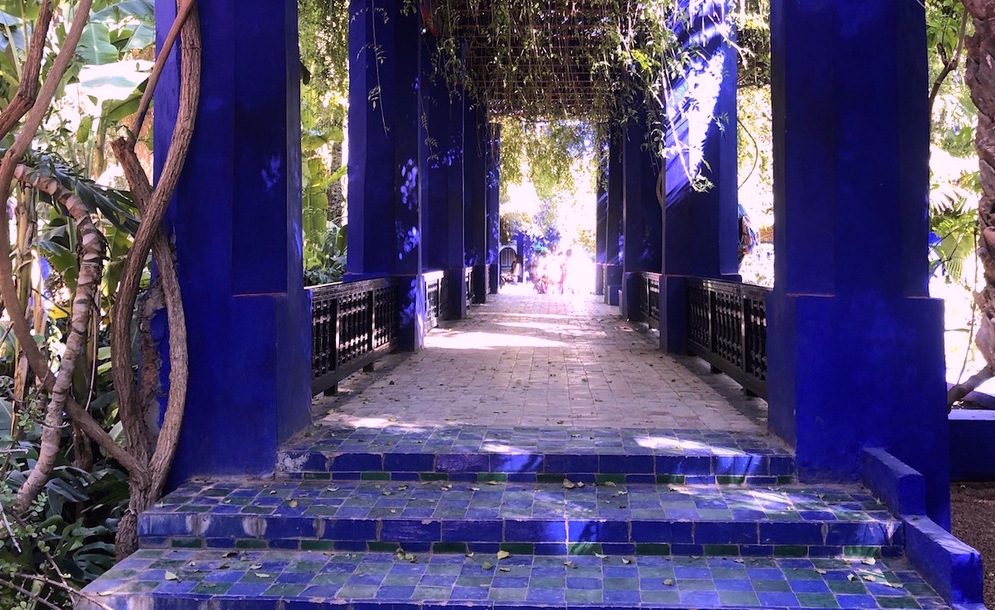
Dar El Bacha Museum of Confluences
We were excited to visit one of the best preserved examples of Moroccan architecture and design, the Dar El Bacha Musee de Confluences, which was formerly the governor’s palace and home to the notorious Thami El Ghouli, Lord of the Atlas. The elaborate masterpiece exemplifies the sumptuous lifestyle of the Pasha during the French occupation, with its luxurious decoration, elaborate courtyard, carved cedar wood paneling, coffered ceilings, and Andalusian Arab-style geometric zellige tiles.
Inside the courtyard was Bacha, one of Morocco’s most celebrated and beautifully styled coffee shops. Oozing with French colonial charm, the airy greenhouse setting was bedecked with antiques and old school waiters dressed in white jackets and fez caps (which we particularly loved). The coffee specialists guided us through their extensive menu, offering over 200 varietals and flavors, served from golden decanters with fine china place settings…yet all for a surprisingly reasonable price.
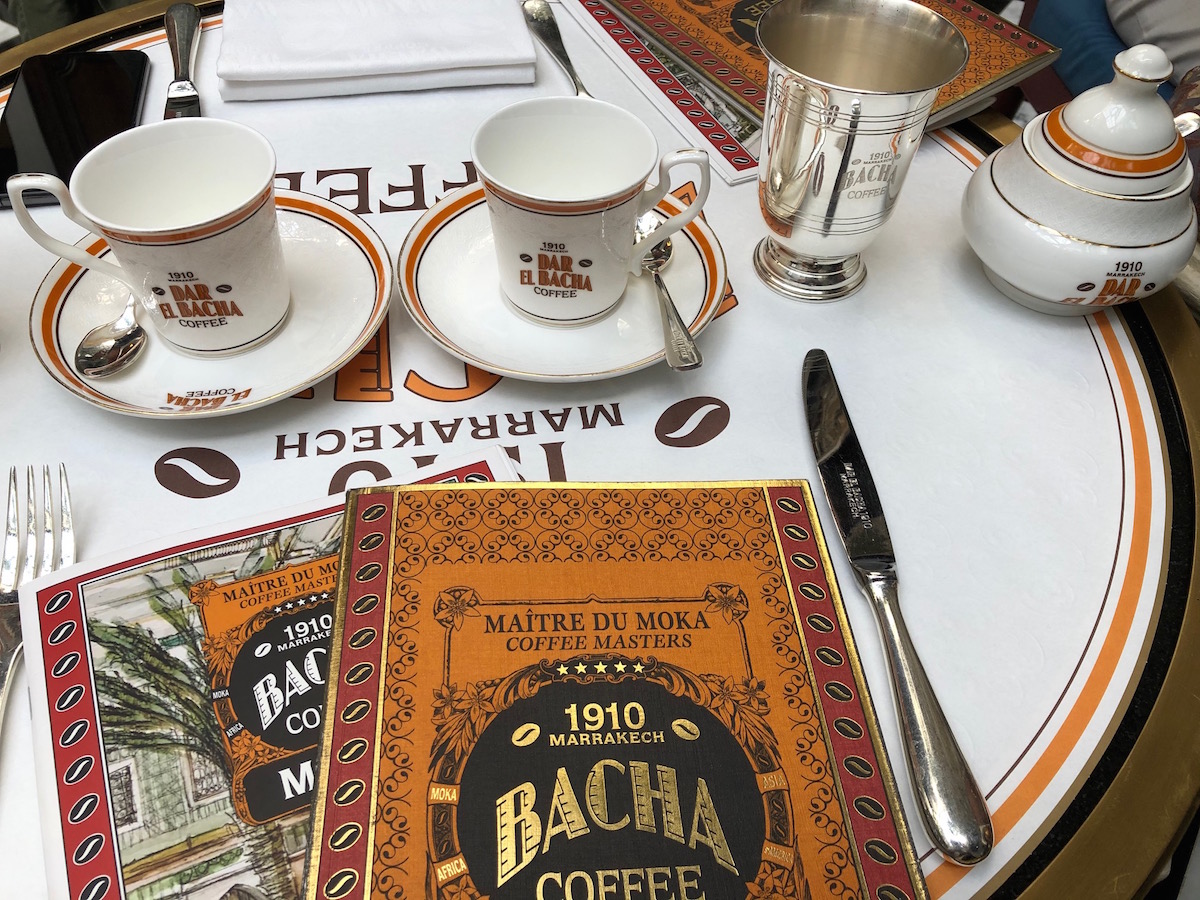
Le Jardin Secret
Tucked away off a busy street in the souk was Le Jardin Secret—The Secret Garden, of course—one of the largest and oldest palaces in the medina. Formerly known as the Riad Loukrissi, it was once the opulent home of Qaid U-Bihi, who was head of the Haha tribe. We immersed ourselves in the lush, peaceful setting of the the exquisitely laid gardens, before exploring the 400-year-old palace, which housed a wealth of information on the history of Marrakech, ancient Moroccan architecture, and Arabic culture.

Jemaa el Fna
Wandering around the souk in the ancient Medina, it felt as if time had stood still. Narrow, winding streets were filled with vendors selling Moroccan handicrafts, such as indigenous lamps, handmade shoes, woven bags, caftans, rugs, leather goods, textiles, silver jewelry, pottery…as well as Argan oil products, food and spices. We proudly learned how to haggle discounts of up to 50%. We also got a bit lost, only to realize that all roads led to the sprawling central square, Jemaa al Fna, which was a feast for the senses.
As the sun set, the square came to life as part circus and part street fair. Locals and tourists convened around different food stalls serving Moroccan tagines or spit barbecue grills, made with both familiar and more exotic parts of the animal. Snake charmers, henna tattoo artists, Berber water men, and other cultural curiosities descended for photo ops, which added to the chaotic, multi-sensorial experience…obviously not for the faint of heart.
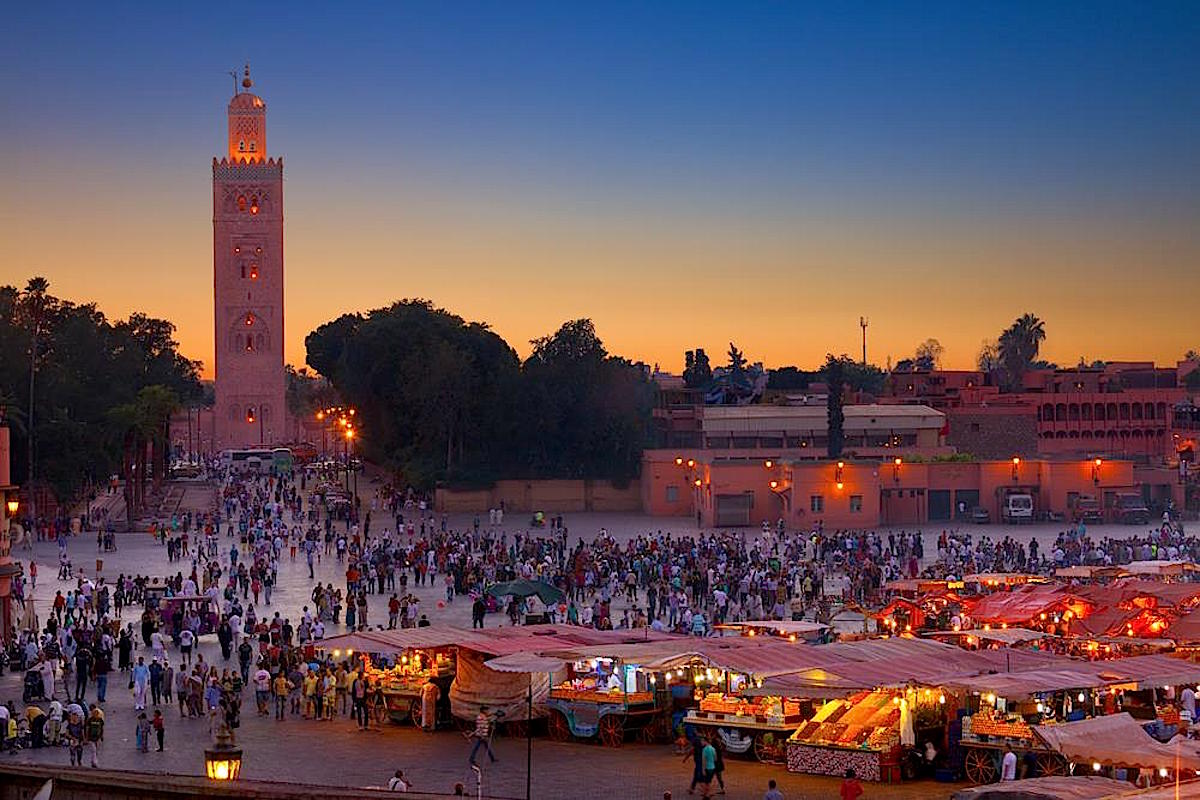
Mimouna Restaurant
For a special dinner one evening, we headed over to the new city, characterized by posh shopping malls and wider avenues, to experience the refined but unstuffy Mimouna restaurant, in the five-star Dar Rhizlane boutique hotel. In a lush garden setting with floor to ceiling windows, it serves some of the best contemporary Moroccan cuisine in Marrakech. With a seasonally changing menu, we appreciated that the kitchen’s experiments with new flavors added an interesting twist to classic tagines and seafood dishes. The elegant dining room featured brown zelliges, a beamed ceiling and dramatic French chandeliers, making for a sumptuous atmospheric experience.
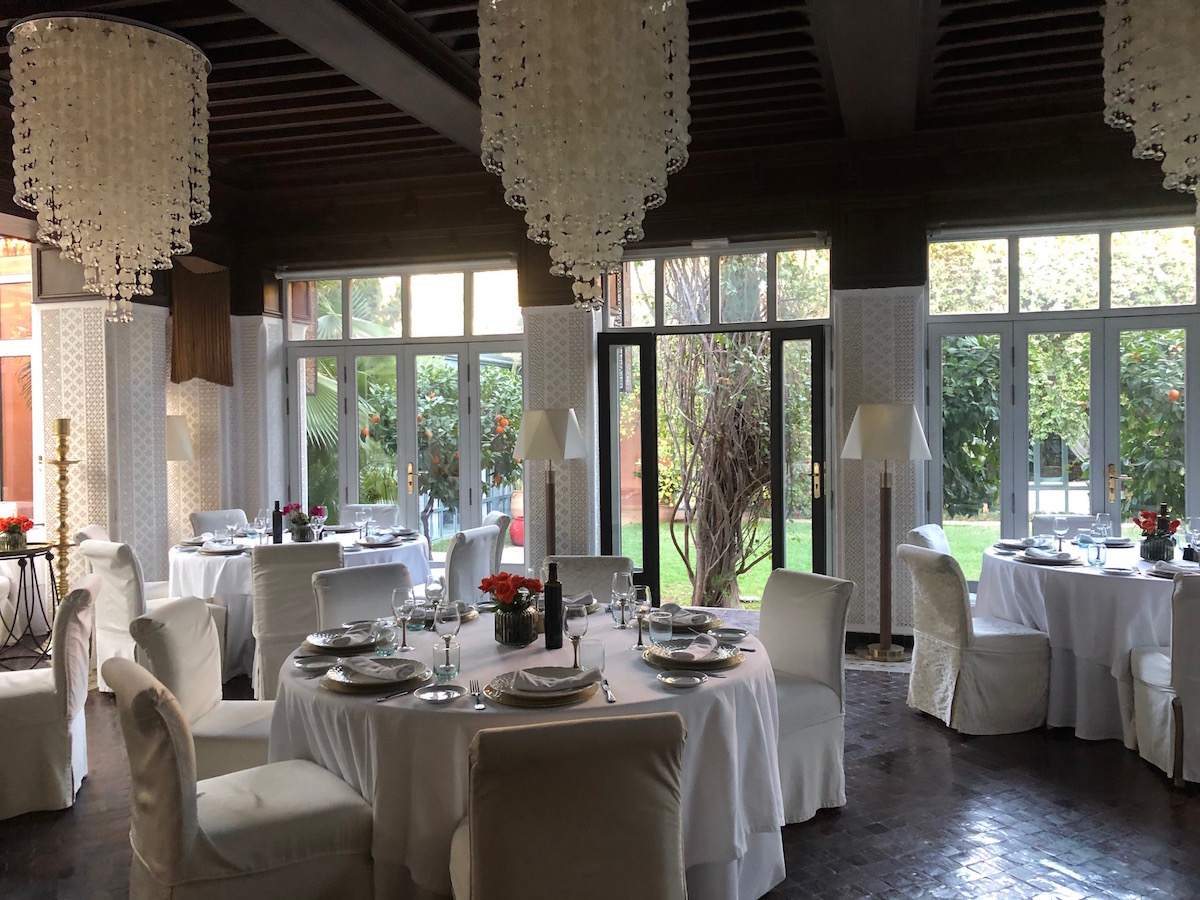
Essaouira
A two hour drive west of Marrakech was the beautiful seaside port city of Essaouira, the ideal day trip, and a favorite weekend destination for locals—who go for the wide white sand beach and surf. A special treat, on the ride over, we actually spotted goats clambering up the argan trees. Only found in this part of the world, they possess unique sets of hooves that allow them to climb and feast on the nuts up in the tree.
The name of the town translates to “little picture” in Arabic, which is appropriate, considering its picturesque setting…which you might know as Astapor, the mythical city in Game of Thrones. Navigable by foot, we started at the bustling port, filled with fishing boats, and proceeded to explore the well preserved, ancient white-walled medina, before walking up to the fort for breathtaking views of the dramatic coastline. There are any number of port cafes for freshly caught local seafood.
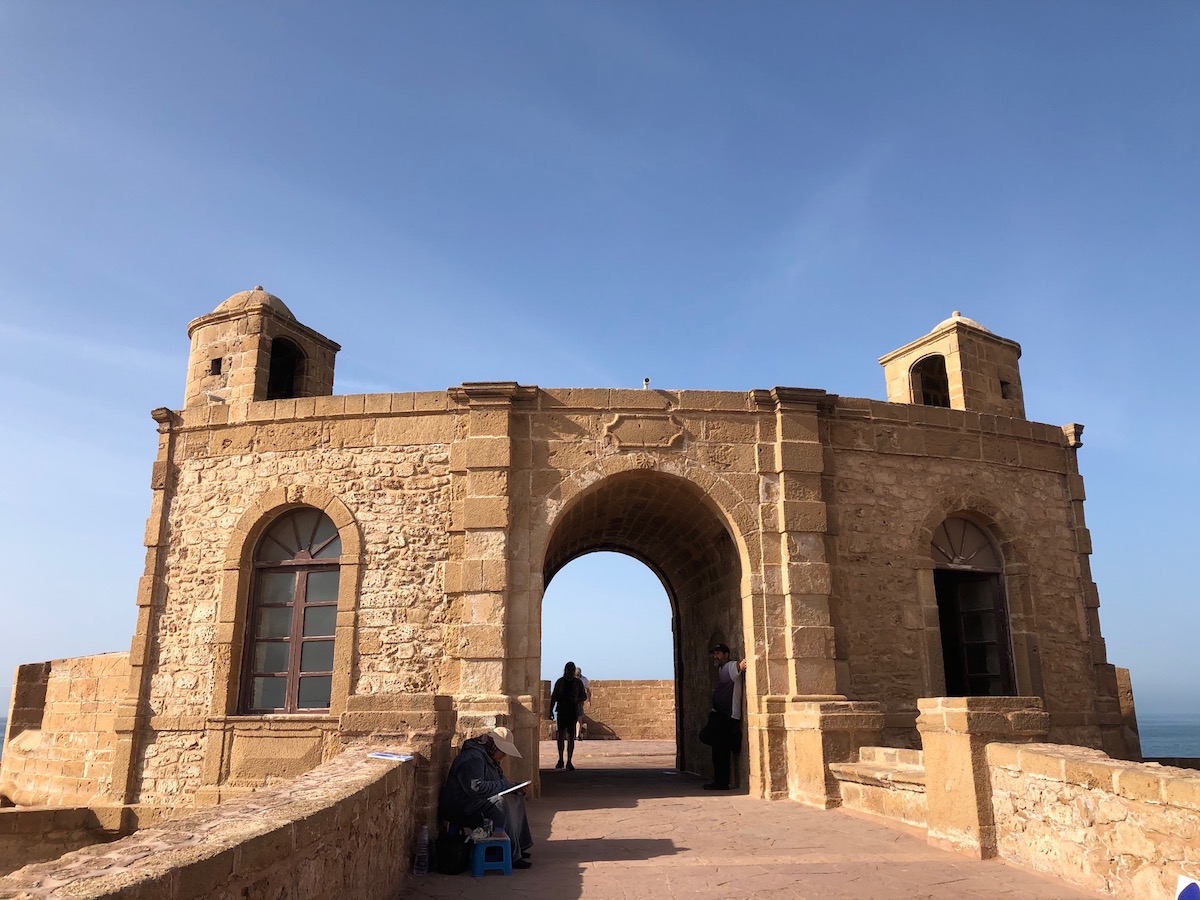
Oberoi, Marrakech
As the bar for luxury in Marrakech keeps rising, the recently opened Oberoi, Marrakech has gone a long way to set the new standard. Set on 28 acres of beautifully landscaped gardens, filled with citrus orchards and olive groves with views of the snow-capped Atlas Mountains, the spectacular oasis was actually located about 25 minutes minutes from the ancient walled city—giving it a seductive air of seclusion.
A testament to the intricate craftsmanship of Moroccan design, the central courtyard was modeled after the historic 14th Century Medersa Ben Youssef, and designed by world renowned architect Patrick Collier. It incorporates dazzling design elements, including a large shallow reflection pool, intricate archways and tile work which was all hand created by over 500 Moroccan artisans, taking five years to complete. And it shows.
We definitely felt like royalty in our luxuriously appointed deluxe room with private terrace (there are a total of just 84 rooms and suites).
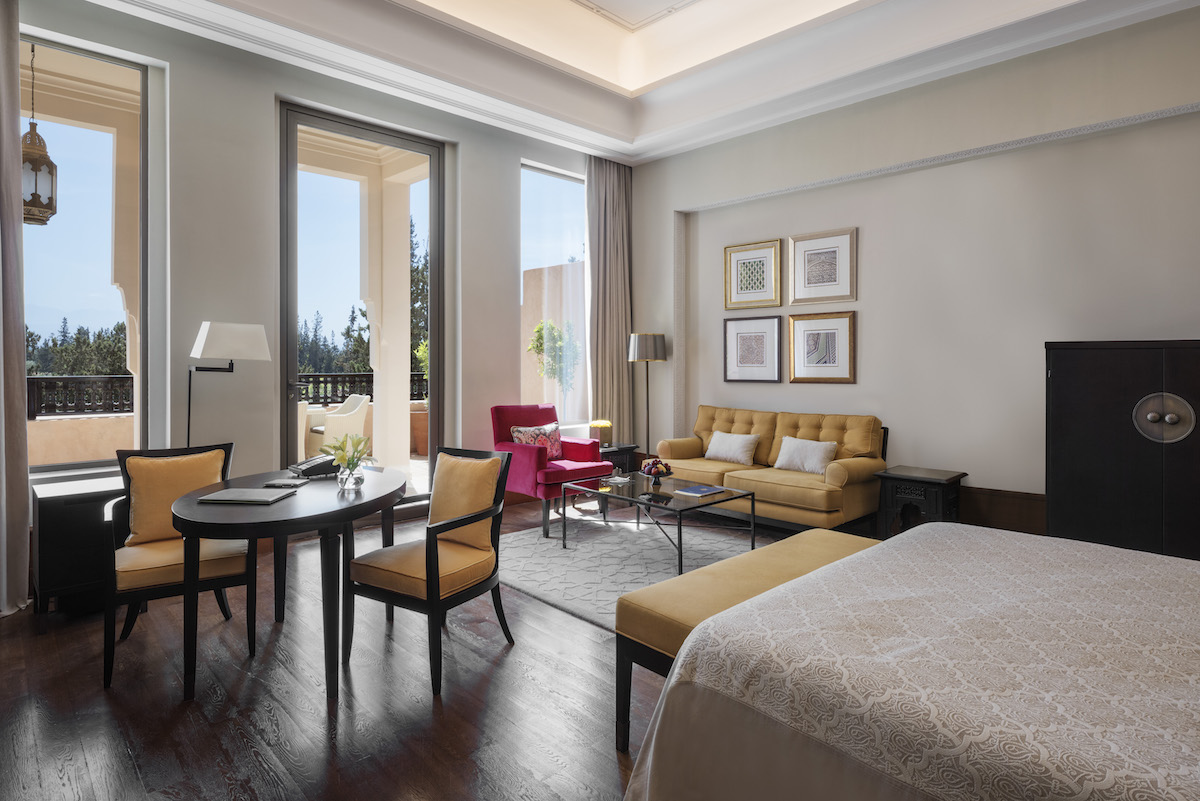
But the majority of the accommodations were actually deluxe villas, with Andalusian design elements, and each with a large pool in a private landscaped courtyard…as well as a master bedroom and sitting/dressing areas, airy marble bathroom, and with beautiful, hand-painted, traditional zellige tiles and hand-sculpted wall panels. A Royal Suite offered views to the canal, orchards and Atlas Mountains; while the sprawling Presidential villas had 1,700 square feet of plush living space, as well as private gardens.
Spending the afternoon by the large outdoor pool area, landscaped with sweeping palm trees in a desert oasis atmosphere, we enjoyed an alfresco poolside lunch at the chic Azur restaurant, which offers light and healthy Mediterranean inspired dishes. Later, at the beautiful Oberoi spa, we took a dip in the indoor pool overlooking the orchards; there was also a yoga pavilion and fitness center, and a range of of Moroccan and Ayurvedic spa treatments, including herbal massages and hammams, all of the particularly luxurious kind.
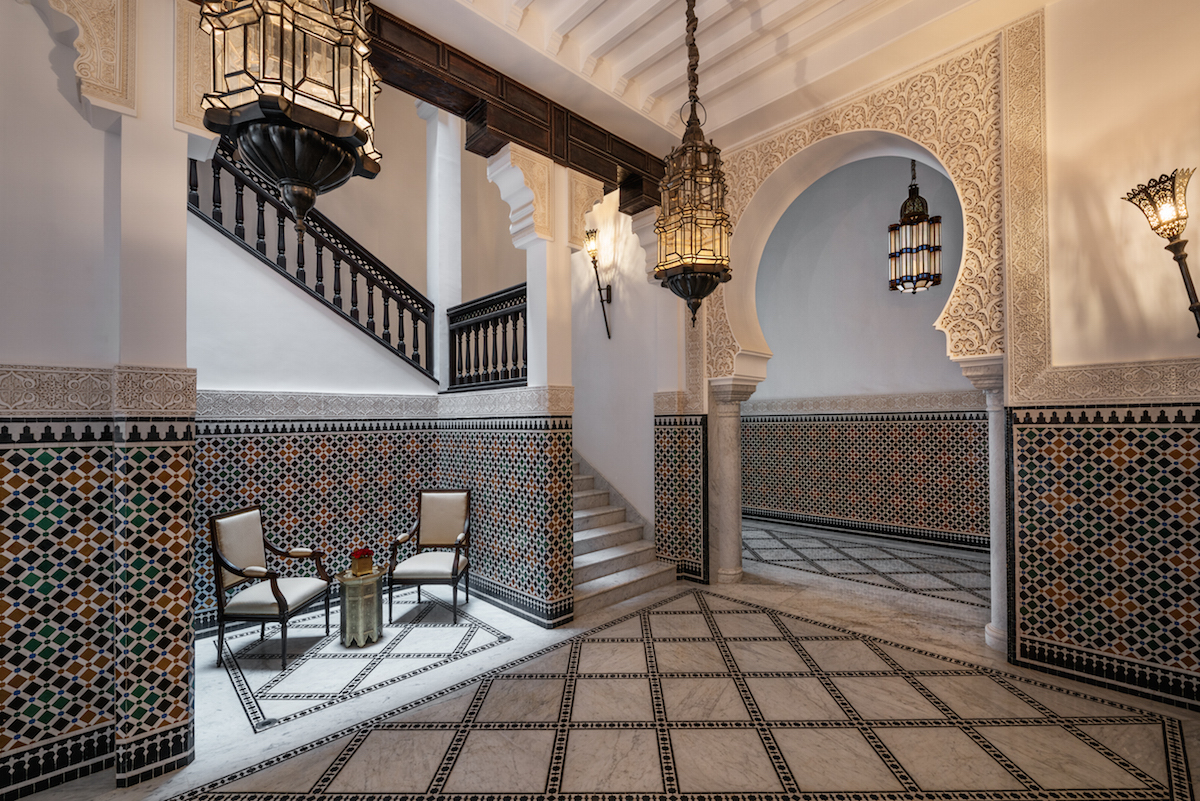
But the Oberoi is also a culinary destination unto itself. And the traditional Moroccan cuisine at the exquisite Siniman restaurant, overlooking the regal courtyard, was a particular indulgence. The gorgeous dining room décor featured high ceilings, ornate tile work and carved columns. Live Moroccan music elevated the fine dining experience to something uniquely magical.
The terrace at Tamimt made for one of the more breathtaking dining experiences we’ve ever enjoyed, with views of the grand canal, the orchards and the Atlas mountains. And the contemporary Indian/Mediterranean fare can be had for both breakfast and dinner. But even the indoor dining room was elegantly decorated with frescoes lit with grand chandeliers surrounding tufted banquettes.
But we capped our visit with cocktails and champagne at Vue, the Oberoi’s stunning alfresco bar, which enjoys those very same views. And we couldn’t imagine wanting to be anywhere else…ever.
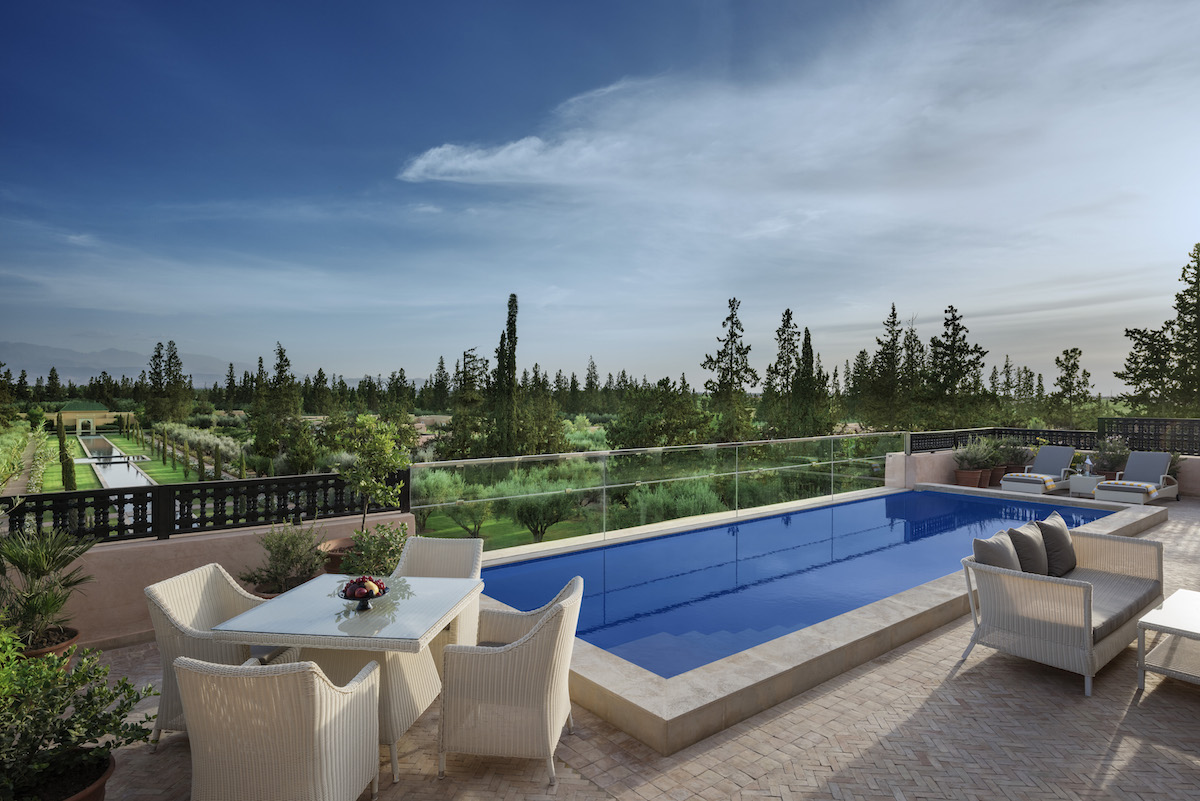
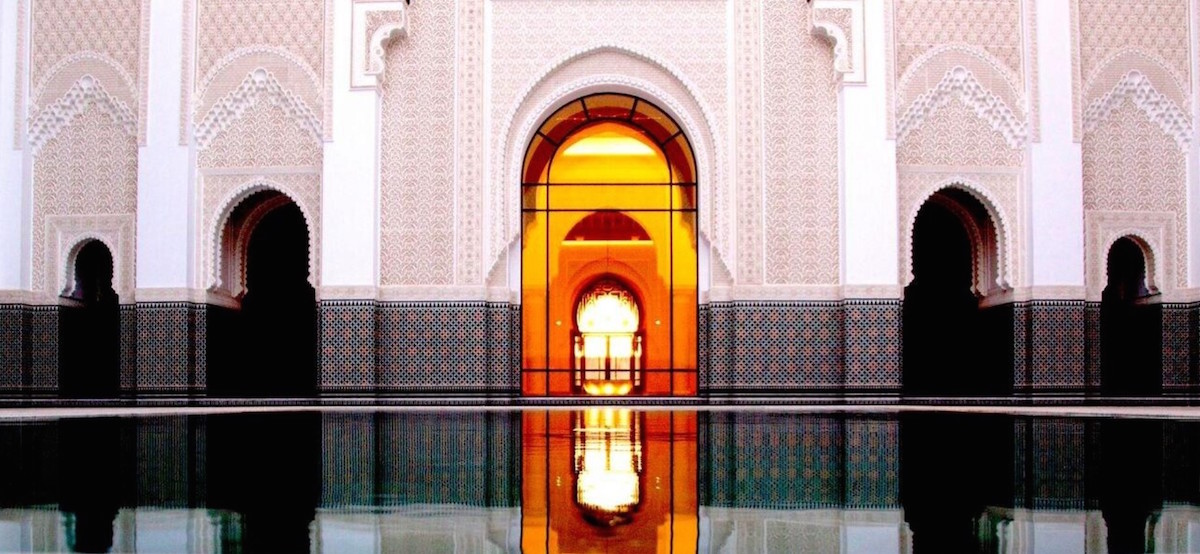




Facebook Comments